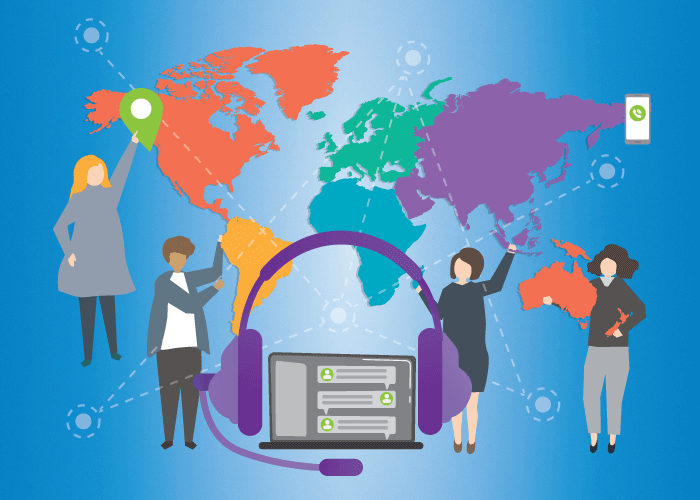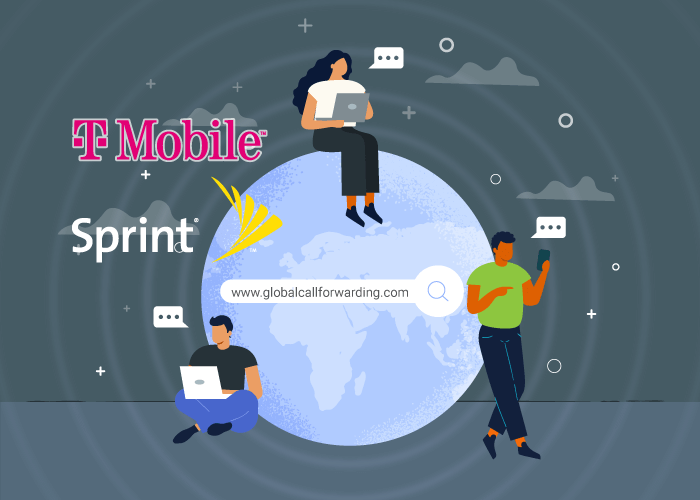International toll free numbers can help you expand your company’s reach by creating communication channels between your company and interested customers in other countries and states. Here we will outline how much an international toll free number costs and what important factors to take into account when getting a new international toll free number.
International Toll Free Number Costs: Factors to Consider
International toll free phone numbers are toll free numbers for different countries across the world. Residents within those countries can call your ITFN for free while incoming calls are forwarded to a location or line in a country of your choice.
This enables your business to offer sales and customer support to international countries. For instance, you can get a UK toll free number and have calls forwarded to your office in Singapore.
How much an international toll free number costs depends on the following factors:
1. How you answer calls
What device you answer calls on can affect the ultimate price you pay for an international toll free number service. For instance, calls answered on a mobile phone may be more expensive than calls answered on a VoIP or SIP phone.
2. Where calls come from
One of the biggest contributors to the international toll free phone number cost is the location of your callers. That is, where your callers are calling from. For instance, calls from China may be more expensive than calls from the UK or Singapore. Furthermore, what device — landline or mobile — is used to call can also affect the cost.
3. Talk time per month
What is your business’ call volume per month? How many calls and how much call time do you expect? This is also important to consider when getting an ITFN service. The more you talk, the more you pay. However, there are plans that reduce cost per minute when your call traffic increases.
4. Additional features and services
What additional features or add-on services do you need? These additional features can increase your overall cost. Important features like outbound calling, IVR, call forwarding, etc., should be easily accessible. If the prices for these services are too high, you may want to consider a different service.
5. Extra fees
Lastly, don’t forget to take into account any additional fees such as set-up or installation fees, cancellation fees, long-term contracts, etc. Look for a provider that doesn’t need set-up or cancellation fees so you can switch providers if needed.
Global Call Forwarding: ITFN Price Breakdown
Here we breakdown our current international toll free number costs for the most popular countries. We include our basic monthly plan, SIP trunking price, and forwarding rates.
1. US Toll Free Numbers
To buy a US toll free number, you can simply review the below pricing information and sign up on our homepage.
-
- Cost of a US ITFN: $12.95
- SIP trunk pricing for outbound calls: $25 for 10 channels
- Rate for forwarding to IP: $.02 – $.04 per additional minute
2. Germany Toll Free Numbers
With Germany virtual toll free phone numbers, you can now offer German residents a free way to connect with your business.
-
- Cost of a Germany ITFN: $17.95
- IP trunk pricing for outbound calls: $25 for 10 channels
- Rate for forwarding to IP: $0.05- $0.07 per additional minute
3. UAE Toll Free Numbers
UAE 800 numbers can help your business offer sales and customer support to individuals and businesses located in UAE.
Cost of a UAE ITFN: $28.95
SIP trunk pricing for outbound calls: $25 for 10 channels
Rate for forwarding to IP: $0.43 – $0.47 per additional minute
4. UK Toll Free Numbers
Use UK freephone numbers to create reliable communication channels between your business and its UK clientele.
Cost of a UK ITFN: $12.95
SIP trunk pricing for outbound calls: $25 for 10 channels
Rate for forwarding to IP: $0.063 – $0.083 per additional minute
5. Singapore Toll Free Numbers
Buy Singapore toll free numbers to create a business in Singapore and add locals to your customer base.
Cost of a Singapore ITFN: $27.95
SIP trunk pricing for outbound calls: $25 for 10 channels
Rate for forwarding to IP: $0.063 – $0.082 per additional minute
6. Japan Toll Free Numbers
Japan toll free numbers will help you enter the Japanese market without increasing the cost of operations.
-
- Cost of a Japan toll free phone number: $68.95
- SIP trunk pricing for outbound calls: $25 for 10 channels
- Rate for forwarding to IP: $0.33 – $0.37 per additional minute
7. Hong Kong Toll Free Numbers
Use Hong Kong toll free numbers to increase sales and offer customer service to local consumers by making your Hong Kong business accessible and easy to call.
-
- Cost of a Hong Kong ITFN: $27.95
- SIP trunk pricing for outbound calls: $25 for 10 channels
- Rate for forwarding to IP: $0.063 – $0.082 per additional minute
8. Australia Toll Free Numbers
Want to expand to Australia? Australia virtual numbers can help you test the market and see how your product performs before you open field offices.
-
- Cost of an Australia toll free number: $13.95
- SIP trunk pricing for outbound calls: $25 for 10 channels
- Rate for forwarding to IP: $0.063 – $0.082 per additional minute
9. China Toll Free Numbers
Use China toll free numbers to sell to local Chinese residents and businesses. Enter the Chinese market and advertise locally.
-
- Cost of a China ITFN: $44.95
- SIP trunk pricing for outbound calls: $25 for 10 channels
- Rate for forwarding to IP: $0.37 – $0.41 per additional minute
10. India Toll Free Numbers
Doing business in India? Connect to India’s telecommunication network to make global communication easier and less expensive.
-
- Cost of an India ITFN: $38.95
- SIP trunk pricing for outbound calls: $25 for 10 channels
- Rate for forwarding to IP: $0.25 – $0.35 per additional minute
11. Mexico Toll Free Numbers
Mexico toll free numbers can open your business to include a Mexican customer base.
-
- Cost of a Mexico ITFN: $12.95
- SIP trunk pricing for outbound calls: $25 for 10 channels
- Rate for forwarding to IP: $0.063 – $0.073 per additional minute
12. Canada Toll Free Numbers
Get Canada toll free numbers today and start selling your product or service in Canada. Improve brand visibility and awareness by advertising locally.
-
- Cost of a Canada toll free number: $12.95
- SIP trunk pricing for outbound calls: $25 for 10 channels
- Rate for forwarding to IP: $0.02 – $0.04 per additional minute
Choose Your International Toll Free Number Now!
ITFNs make it easy to do global business without incurring exorbitant international calling rates. Get an international toll free number based on the countries and regions you want to target and expand your business to. With these numbers, you can add new customer bases, improve sales, offer global customer support, and become a reputable international brand. Sign up today or call us to learn more!






